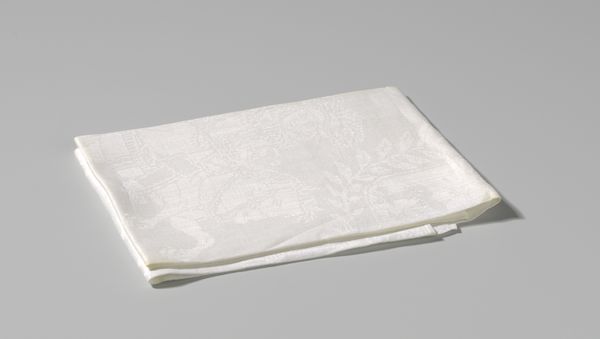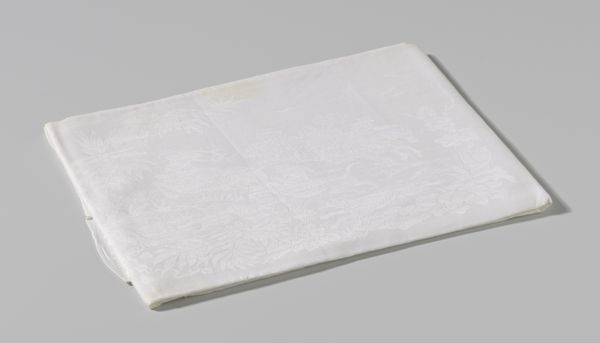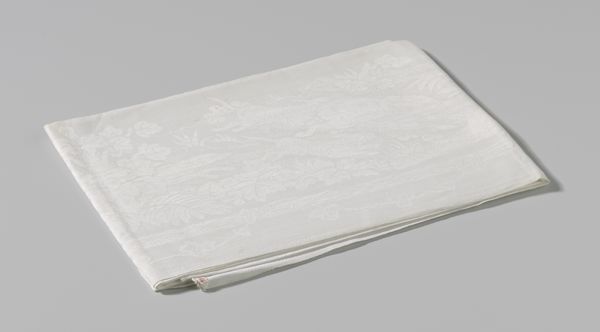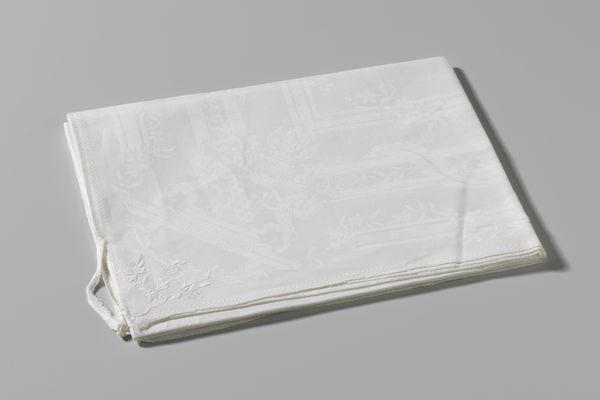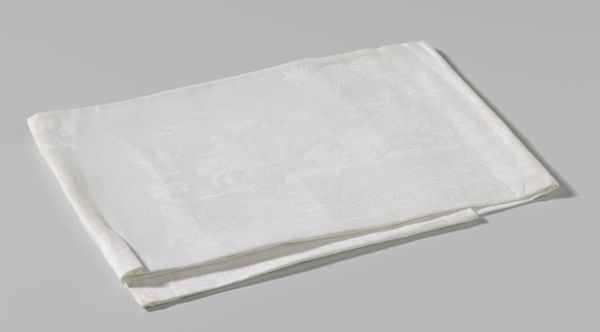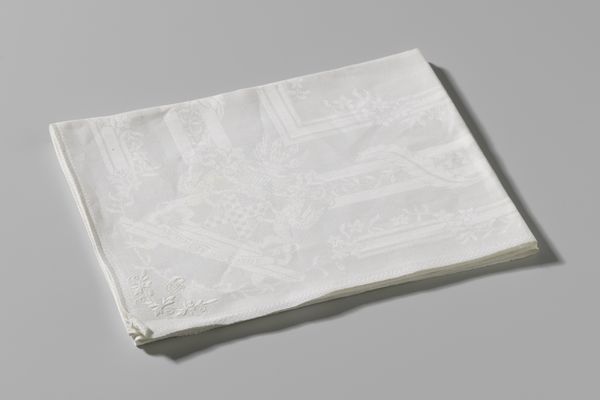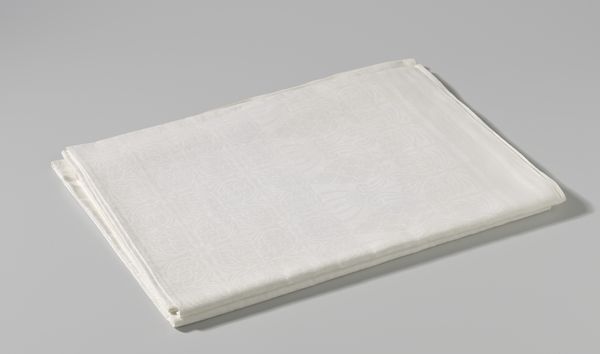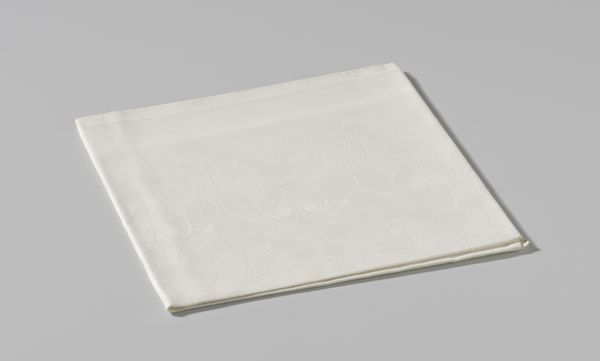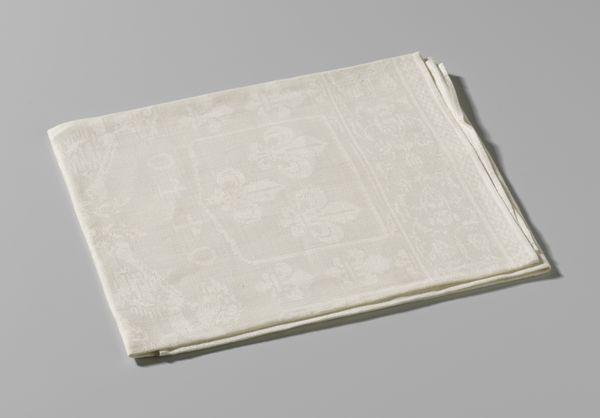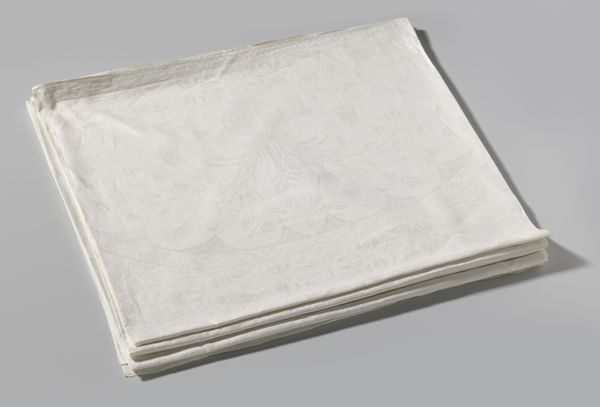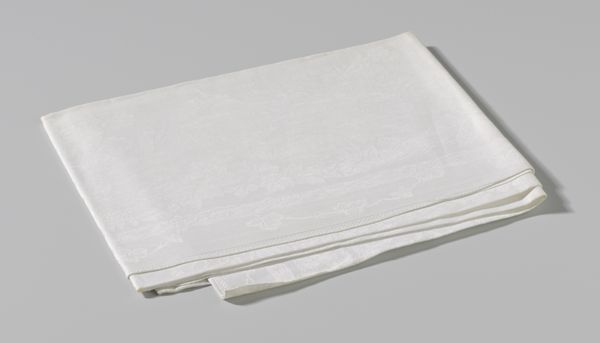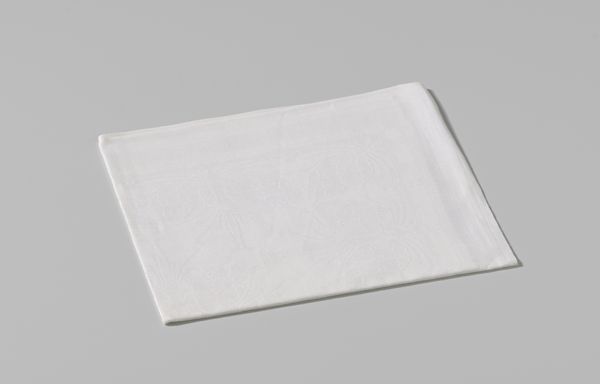
textile
#
homemade paper
#
paper non-digital material
#
book design
#
hand drawn type
#
textile
#
personal journal design
#
printed format
#
book mockup
#
publication mockup
#
decorative-art
#
design on paper
#
publication design
Dimensions: length 115 cm, width 88 cm
Copyright: Rijks Museum: Open Domain
Curator: Here we have a linen damask napkin, created around 1867 by the firm of the Rath brothers. Editor: It's incredibly subtle, almost ghostly in its whiteness. I initially read it as simply a folded piece of fabric, but there is a more ornate patterning evident upon closer inspection. Curator: That understated elegance speaks volumes about the social rituals of dining in that era. The seemingly simple napkin held a particular cultural importance. Editor: Yes, the visual subtlety is what makes it fascinating. Do you see that armorial imagery woven in? What might that have symbolized to its original owner? Curator: Precisely. Heraldry on a napkin signaled lineage and status, not merely domestic utility. Owning bespoke textiles of this kind broadcast a family's pedigree within elite social circles. Think of the silent power such imagery would wield in a formal dining setting! Editor: It’s more than mere identification though. Crests trigger immediate associations – honor, duty, lineage. The family eating, quite literally, off its own reputation. Do you think the textile production houses held social sway as well? Curator: Indeed, firms like the Rath brothers played a critical, though largely unacknowledged, role in constructing social hierarchies through such material commissions. Patrons certainly had particular social cachet among the city's cultural and economic elites. Editor: Knowing it served within that cultural context certainly deepens its narrative impact. Otherwise, it may as well be a common handkerchief. Curator: Exactly! Understanding its historical function transforms it. It reflects back, in a strange way, the history of bourgeois identity during the period. Editor: So it acts as a kind of artifact containing powerful emblems. It is interesting how the simple pattern could offer significant psychological and sociological meaning. Curator: Well said. It underscores how everyday objects once served, and continue to serve, as vehicles of power. Editor: It definitely makes you reconsider the objects in our modern lives. What stories do they tell about us, I wonder?
Comments
No comments
Be the first to comment and join the conversation on the ultimate creative platform.
